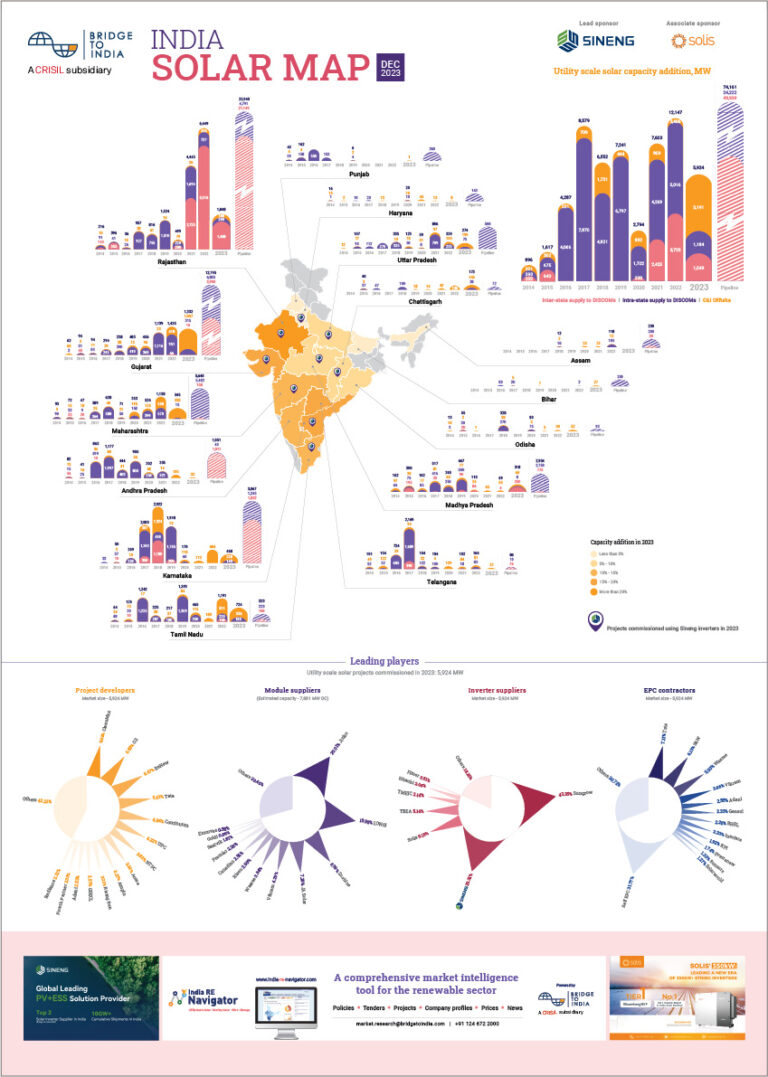The Telangana State Electricity Regulatory Commission (TSERC) recently released final regulations for demand-side management (DSM). The initiative is designed to encourage and incentivise consumers to alter their power consumption pattern, both in terms of level and timing of demand. State DISCOMs are required to establish DSM cells and undertake load research and develop baseline data for assessing DSM potential. They are also required to formulate annual DSM plans, which would be used by TSERC to establish targets for load reduction and cost savings.
- Demand response programmes can reduce power procurement costs, and ultimately consumer tariffs, by shaving peak requirement;
- Based on various studies around the world, a reduction of 2-4% in peak load may be possible in India;
- Policy solutions such as demand response are extremely cost and time effective, and can play a vital role in increasing renewable power penetration in the grid;
Maharashtra notified the first-ever DSM regulations in India in 2010. In total, 18 states have now notified DSM regulations including major power consuming states such as Punjab, Haryana, Delhi, Uttar Pradesh, Gujarat, Karnataka and Tamil Nadu.
DSM entails primarily two different kinds of programmes – energy efficiency and demand response. Energy efficiency programmes are relatively easier to implement, and offer direct and larger benefit. By comparison, demand response programmes, require more intricate knowledge of consumer behaviour and demand patterns. The objective is to decrease customer demand during times of high system demand or emergencies by offering them a rebate or lower energy costs.
There are many potential benefits of DSM. Lower power demand has obvious direct financial and environmental benefits. Demand response programmes can further reduce power procurement costs, and ultimately consumer tariffs, by shaving peak requirement, which is typically much more expensive than off-peak power. A US study shows that utilities were able to reduce their peak demand by around 2%. In India, many DISCOMs have completed pilot studies with encouraging results. A Tata Power Delhi study in 2015 showed potential demand response opportunity in India of between 4-8 GW.
Figure: Peak demand reduction from demand response measures in the USA, % of peak demand

Source: US Energy Information Administration, Annual Electric Power Industry Report 2017
As seen in the chart below, Indian power demand typically peaks in late evenings (when solar power is not available) and power prices tend to spike up as seen in the chart below. Reduction of peak load therefore can have substantial financial benefits.
Figure: Total power demand in Uttar Pradesh and traded power prices on 30 April 2019

Source: Uttar Pradesh SLDC, Indian Energy Exchange
Other benefits of demand response include improvement in grid resilience and stability besides possible deferral of expensive generation, T&D system upgrades. These benefits are particularly desirable in increasing share of renewable power in the grid and alleviating dependence on fossil fuels.
Unfortunately, progress has been patchy on the implementation front. Demand response still remains a relatively new concept in India. Pilot initiatives have not been scaled up due to lack of awareness, resources and skills at the DISCOM level. This is a shame because India will urgently need to ramp up efforts to absorb more renewable capacity in the grid as substantial new capacity comes online in the next few years. Policy solutions such as demand response, time of day tariffs and ancillary services are extremely cost and time effective, and should be prioritised over expensive T&D system upgrades.












